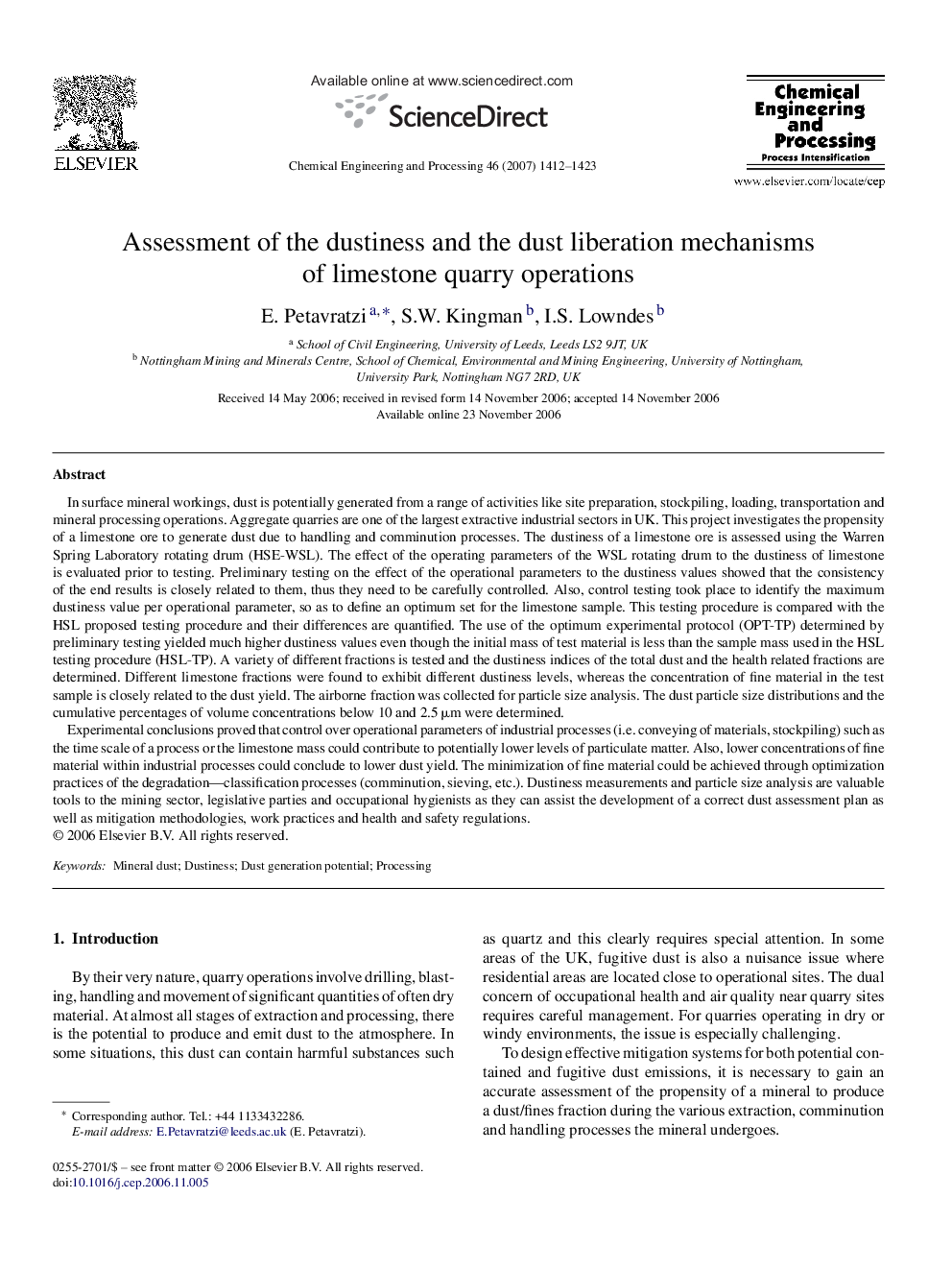| کد مقاله | کد نشریه | سال انتشار | مقاله انگلیسی | نسخه تمام متن |
|---|---|---|---|---|
| 688240 | 889406 | 2007 | 12 صفحه PDF | دانلود رایگان |

In surface mineral workings, dust is potentially generated from a range of activities like site preparation, stockpiling, loading, transportation and mineral processing operations. Aggregate quarries are one of the largest extractive industrial sectors in UK. This project investigates the propensity of a limestone ore to generate dust due to handling and comminution processes. The dustiness of a limestone ore is assessed using the Warren Spring Laboratory rotating drum (HSE-WSL). The effect of the operating parameters of the WSL rotating drum to the dustiness of limestone is evaluated prior to testing. Preliminary testing on the effect of the operational parameters to the dustiness values showed that the consistency of the end results is closely related to them, thus they need to be carefully controlled. Also, control testing took place to identify the maximum dustiness value per operational parameter, so as to define an optimum set for the limestone sample. This testing procedure is compared with the HSL proposed testing procedure and their differences are quantified. The use of the optimum experimental protocol (OPT-TP) determined by preliminary testing yielded much higher dustiness values even though the initial mass of test material is less than the sample mass used in the HSL testing procedure (HSL-TP). A variety of different fractions is tested and the dustiness indices of the total dust and the health related fractions are determined. Different limestone fractions were found to exhibit different dustiness levels, whereas the concentration of fine material in the test sample is closely related to the dust yield. The airborne fraction was collected for particle size analysis. The dust particle size distributions and the cumulative percentages of volume concentrations below 10 and 2.5 μm were determined.Experimental conclusions proved that control over operational parameters of industrial processes (i.e. conveying of materials, stockpiling) such as the time scale of a process or the limestone mass could contribute to potentially lower levels of particulate matter. Also, lower concentrations of fine material within industrial processes could conclude to lower dust yield. The minimization of fine material could be achieved through optimization practices of the degradation—classification processes (comminution, sieving, etc.). Dustiness measurements and particle size analysis are valuable tools to the mining sector, legislative parties and occupational hygienists as they can assist the development of a correct dust assessment plan as well as mitigation methodologies, work practices and health and safety regulations.
Journal: Chemical Engineering and Processing: Process Intensification - Volume 46, Issue 12, December 2007, Pages 1412–1423